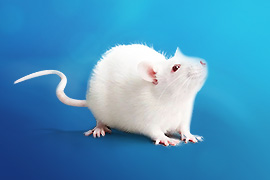一 、Background Introduction
Animal facilities for laboratory testing are specific living environments for experimental animals. Environmental conditions not only affect the quality of experimental animals, but also directly affect the scientificity, sensitivity of animal reactions, and repeatability of experiments. Therefore, it is necessary to strictly control the environmental conditions of experimental animal facilities and meet the requirements of environmental control indicators, including isolators, independent ventilation systems (IVC), and other experimental animal feeding devices that must also meet environmental standards.
二 、Basis for Testing
GB14925-2010 "Laboratory Animal Environment and Facilities"
三 、Example of Specific Implementation
Before the start of our animal facility, we not only conduct routine tests on environmental temperature, humidity, and other indicators, but also continuously monitor environmental microorganisms. The detection points include exhaust ports and sentinel mouse bedding, and we conduct long-term monitoring of dynamic environmental microorganisms, from the number of microorganisms to bacterial identification. Adding environmental monitoring on the basis of animal monitoring can better predict the occurrence of microbial infections in experimental animals.
四、Testing Conditions
Static monitoring of barrier environment
Dynamic monitoring of barrier environment
Static monitoring of isolation environment
Dynamic monitoring of isolation environment
五 、V. Detection items
|
Test item |
|
Temperature |
|
Humidity |
|
Illuminance |
|
Noise |
|
Airflow velocity |
|
Air exchange rate |
|
Relative pressure difference |
|
Air cleanliness |
|
Settling bacteria |
|
Sterility test, total colony count, and identification of species for planktonic bacteria |
|
Sterility test, total colony count, and identification of species for surface bacteria |
|
Sterility test, total colony count, and identification of species for environmental microorganisms (exhaust ports, dirty mats, etc.) |
|
... ... |
-
 Wistar RatDeveloped by the Wistar Institute in the United States in 1907. In 2019, SpePharm (Beijing) Biotechnology Co., Ltd. introduced breeding from the National Rodent Laboratory Animal Seed Center.More
Wistar RatDeveloped by the Wistar Institute in the United States in 1907. In 2019, SpePharm (Beijing) Biotechnology Co., Ltd. introduced breeding from the National Rodent Laboratory Animal Seed Center.More -
 ICR miceIn 1926, the Rockfeller Institute of the United States introduced albino mouse from Switzerland to breed Swiss mouse; in 1948, it was introduced by the Philadelphia Cancer Institute and bred Ha/ICR. In 1973, it was introduced into China and in 2011, SPF (Beijing) Biotechnology Co., Ltd. introduced it from the National Rodent Experimental Animal Seed Center and bred it.More
ICR miceIn 1926, the Rockfeller Institute of the United States introduced albino mouse from Switzerland to breed Swiss mouse; in 1948, it was introduced by the Philadelphia Cancer Institute and bred Ha/ICR. In 1973, it was introduced into China and in 2011, SPF (Beijing) Biotechnology Co., Ltd. introduced it from the National Rodent Experimental Animal Seed Center and bred it.More








